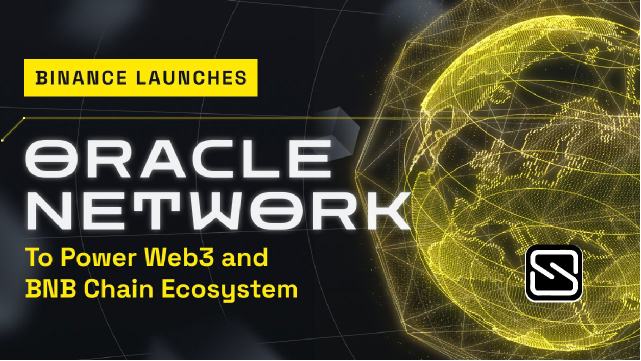Binance has launched Binance Oracle, a decentralized Web3 Oracle, a data feed network that connects real-world data to blockchain smart contracts. The Binance Oracle will enable smart contracts to run on real-world inputs and outputs, starting with the BNB Chain ecosystem.
The Binance Oracle will be a valuable addition to the scalable BNB Chain infrastructure, providing a way for 1,400 decentralized applications and Web3 ecosystem partners to access existing data sources and advanced computations.
According to Binance, the BNB Chain will be the first blockchain to use Binance Oracle to connect smart contracts with off-chain data to retrieve or send out information for better usability.
Furthermore, the early bird program has begun, and over ten BNB Chain projects have already integrated with the Binance Oracle network. Binance Oracle is chain-agnostic and will eventually support more blockchains as well.
Commenting on Binance oracle and the opportunities therein, Investment Director at BNB Chain, Gwendolyn Regina said,
“The new internet is in the process of evolving into well-connected smart contracts. Using oracles to dramatically increase the smart contract’s knowledge of what’s going on outside of the blockchain, allowing it to respond to external events with specified actions will be crucial. Binance Oracle will emerge as a significant contributor to Web3 by offering a stable, reliable, and efficient Oracle network with comprehensive accuracy and accessibility features.”
Binance also emphasizes that the Binance Oracle index prices are checked for correctness and consistency using smart algorithms and all components operate in either a hot-warm or a hot-hot design and Recovery Time Objective is nearly zero.
Because each regional area has its own infrastructure, the system as a whole is impervious to regional disasters. A robust data monitoring architecture is implemented to deliver real-time alerts and reactions.
Binance Oracle achieves the highest level of reliability via the use of five resilient components: sourcing price data from many CEXs and aggregate prices using an intelligent algorithm and using internal TSS (Threshold Signature Scheme) to sign individual data feeds. It feeds the most recent index price to the on-chain oracle, allowing for a customizable time frame or price variation and providing a variety of simple interfaces to on-chain DApps, as well as 24*7 data monitoring and quick response.
For each data feed, the network uses the Threshold Signature Scheme. This distributed signature technique ensures that there isn’t a single point of failure in data security, leading to higher safety. Additionally, during the data feeding process, the legitimacy of the data will be confirmed numerous times using the Binance public key, providing assurance that the data has not been altered.
An oracle bridges the blockchain and the real world. These oracles facilitate the entry of real-world data into the blockchain. This information might range from pricing information to weather forecasts. Oracles can also be bidirectional, allowing them to “send” data to the outside world.
